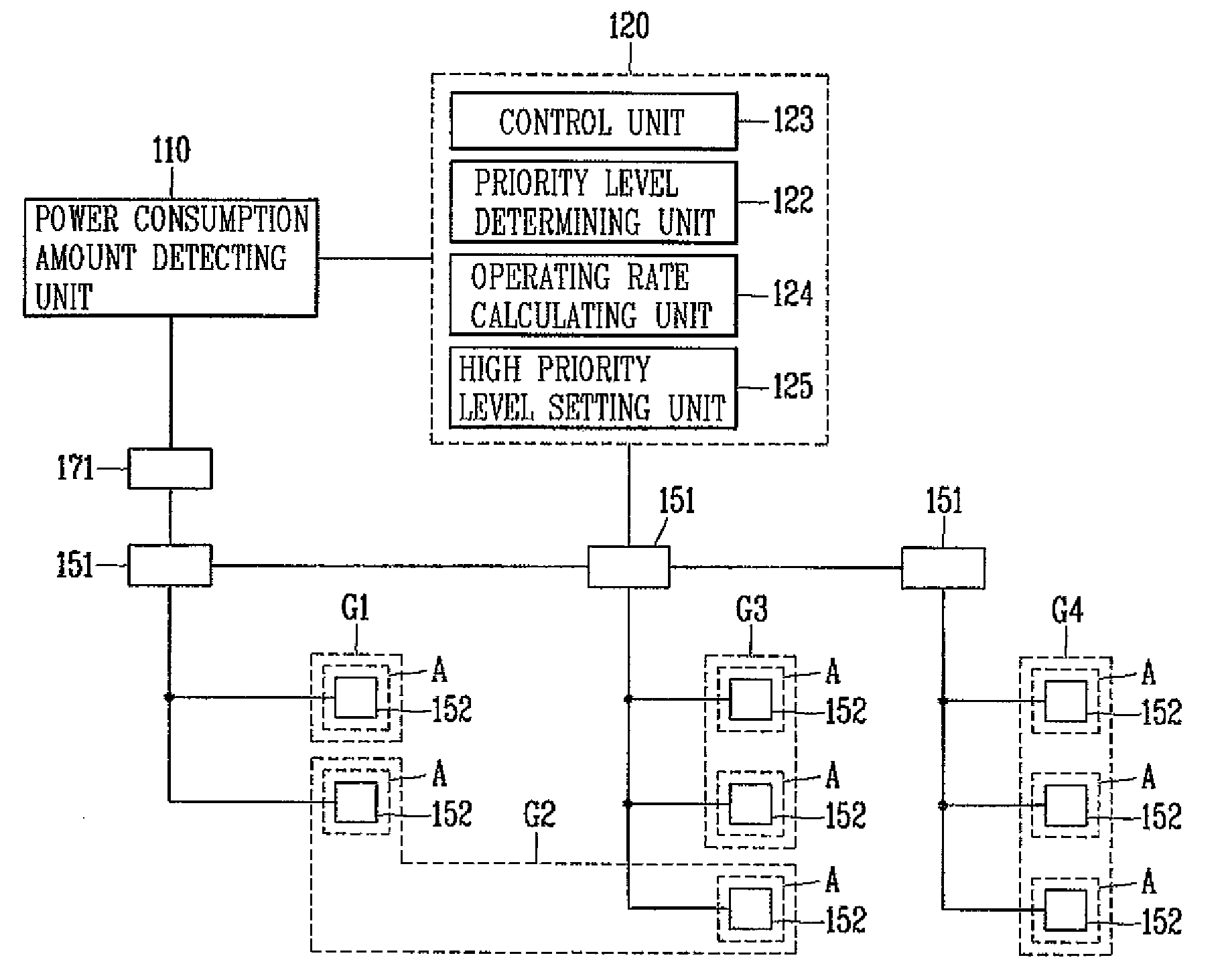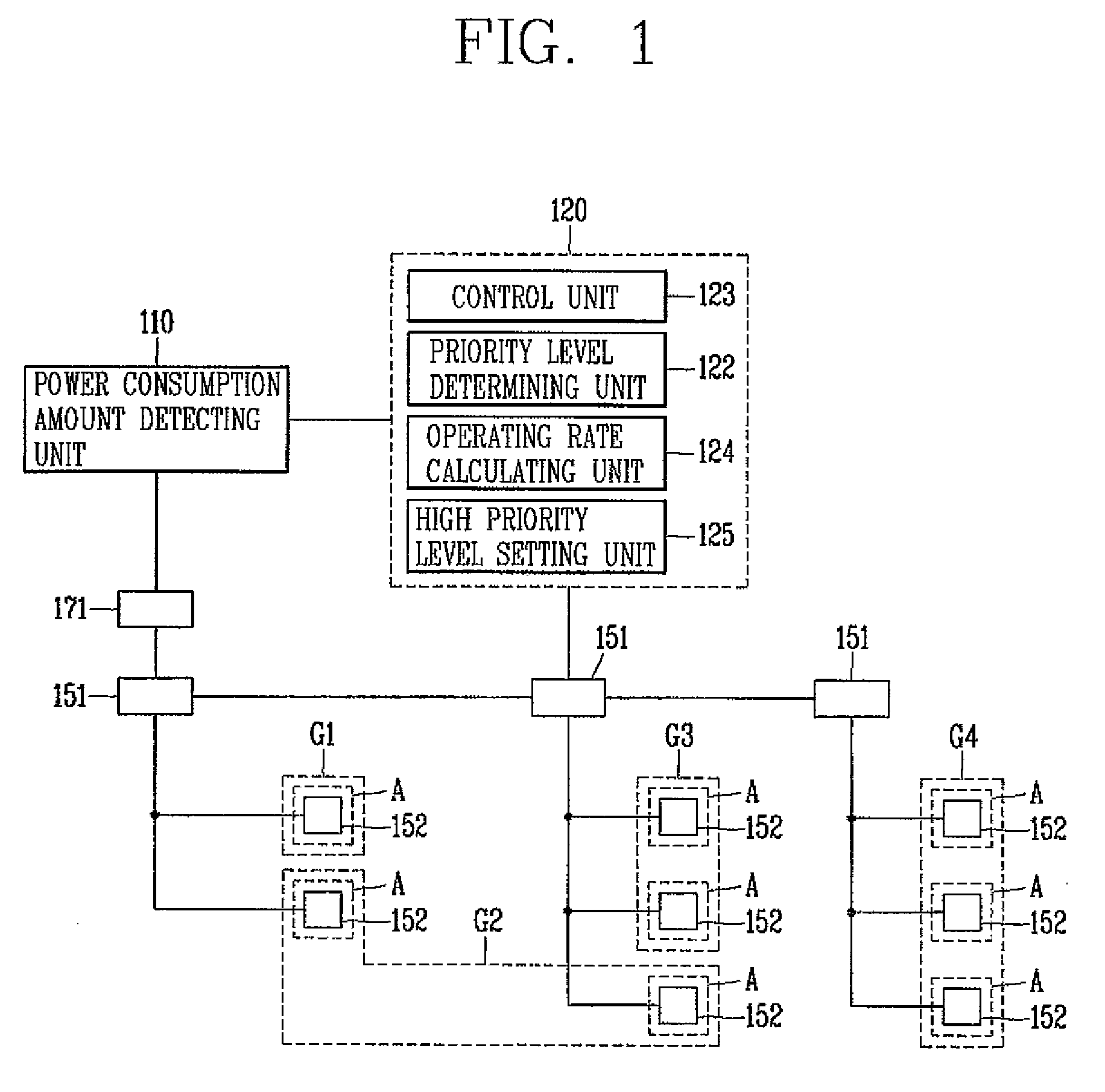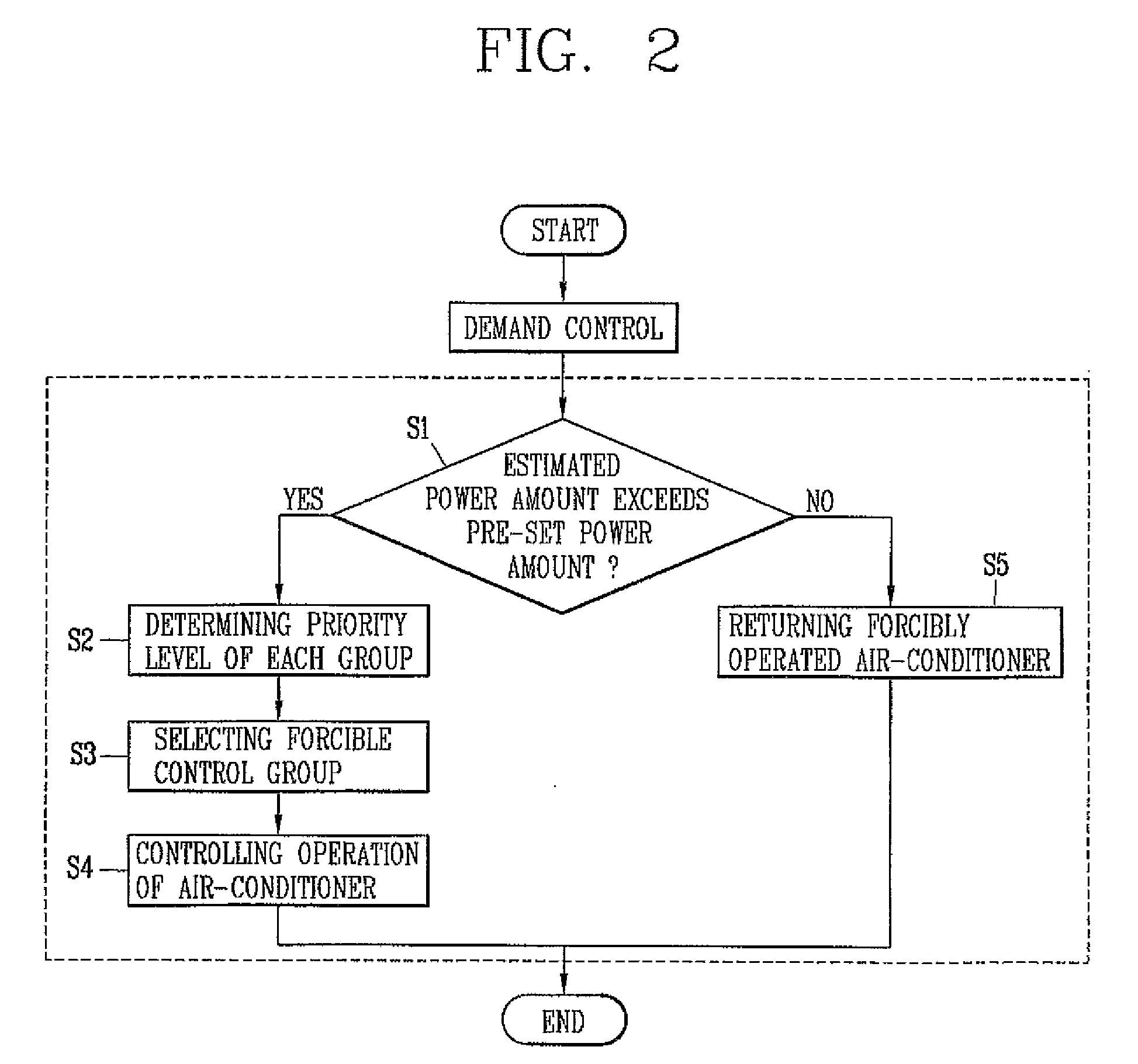System and method for controlling demand of multi-air-conditioner
- Summary
- Abstract
- Description
- Claims
- Application Information
AI Technical Summary
Benefits of technology
Problems solved by technology
Method used
Image
Examples
first embodiment
[0032]A method of controlling multiple air conditioners according to the present invention will now be described in more detail with reference to FIG. 2. FIG. 1 will also be referred to in this description.
[0033]As discussed above, the multiple air conditioners are divided into groups G1, G2, G3 and G4, in which each group includes one or more indoor units 152. Further, each group is assigned a priority level. In addition, the groups may be divided and assigned priority levels by a manager of the building, automatically based on operating histories of the air conditioners, etc. The groups G1, G2, G3 and G4 may also be sequentially assigned a priority level (i.e., the group G1 is assigned a highest priority level, the group G2 is assigned the next highest priority level, etc.). That is, in accordance with embodiments of the present invention, the groups may be divided and assigned priority levels in a variety of different methods, which allows for the individual's comfort to be taken...
second embodiment
[0043]FIG. 3 illustrates a system for controlling multiple air conditioners according to the As shown in FIG. 3, the system includes a power consumption amount detecting unit 210, a demand control unit 220 and multiple air conditioners including outdoor units 251 and indoor units 252. Also shown is a power detecting unit (watt-hour meter) 271. Note that FIG. 3 is similar to FIG. 1, except that the demand control unit 220 includes a control history recording unit 225 in addition to a control unit 223, a priority level determining unit 222, an operating rate calculating unit 221, and a high priority level setting unit 224.
[0044]In more detail, the power consumption detecting unit 210 detects a power consumption amount of the multiple air conditioners installed in each area of a building using data supplied from the watt-hour meter 271 connected with the multiple air conditioners, and transfers the data to the demand control unit 220. The demand control unit 220 then detects whether t...
third embodiment
[0058]A system for controlling multiple air conditioners according to the present invention will now be described with reference to FIG. 5. As shown in FIG. 5, the system includes a power consumption amount detecting unit 310, a demand control unit 320 and multiple air conditioners including outdoor units 352 and indoor units 351. Also shown is a power detecting meter (watt / hr meter) 371 and temperature measuring units 361. Note that FIG. 5 is similar to FIG. 1, except that system includes the temperature measuring units 361, and the demand control unit 320 includes a temperature difference unit 321 in addition to a control unit 323, a priority level determining unit 322, an operating rate calculating unit 324 and a high priority level setting unit 325.
[0059]In more detail, and as shown in FIG. 5, the temperature difference measuring unit 321 is disposed in an area (A) where the indoor unit 352 is installed and measures the temperature of the area (A). The temperature comparing diff...
PUM
 Login to View More
Login to View More Abstract
Description
Claims
Application Information
 Login to View More
Login to View More - R&D
- Intellectual Property
- Life Sciences
- Materials
- Tech Scout
- Unparalleled Data Quality
- Higher Quality Content
- 60% Fewer Hallucinations
Browse by: Latest US Patents, China's latest patents, Technical Efficacy Thesaurus, Application Domain, Technology Topic, Popular Technical Reports.
© 2025 PatSnap. All rights reserved.Legal|Privacy policy|Modern Slavery Act Transparency Statement|Sitemap|About US| Contact US: help@patsnap.com



